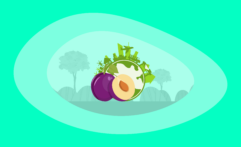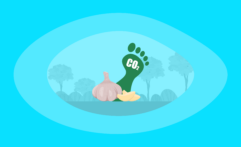Is Eating Oranges Ethical & Sustainable? Here Are the Facts
Impactful Ninja is reader-supported. When you buy through links on our site, we may earn an affiliate commission.
Learn more
Learn more
.
Hey fellow impactful ninja ? You may have noticed that Impactful Ninja is all about providing helpful information to make a positive impact on the world and society. And that we love to link back to where we found all the information for each of our posts. Most of these links are informational-based for you to check out their primary sources with one click. But some of these links are so-called "affiliate links" to products that we recommend. First and foremost, because we believe that they add value to you. For example, when we wrote a post about the environmental impact of long showers, we came across an EPA recommendation to use WaterSense showerheads. So we linked to where you can find them. Or, for many of our posts, we also link to our favorite books on that topic so that you can get a much more holistic overview than one single blog post could provide. And when there is an affiliate program for these products, we sign up for it. For example, as Amazon Associates, we earn from qualifying purchases. First, and most importantly, we still only recommend products that we believe add value for you. When you buy something through one of our affiliate links, we may earn a small commission - but at no additional costs to you. And when you buy something through a link that is not an affiliate link, we won’t receive any commission but we’ll still be happy to have helped you. When we find products that we believe add value to you and the seller has an affiliate program, we sign up for it. When you buy something through one of our affiliate links, we may earn a small commission (at no extra costs to you). And at this point in time, all money is reinvested in sharing the most helpful content with you. This includes all operating costs for running this site and the content creation itself. You may have noticed by the way Impactful Ninja is operated that money is not the driving factor behind it. It is a passion project of mine and I love to share helpful information with you to make a positive impact on the world and society. However, it's a project in that I invest a lot of time and also quite some money. Eventually, my dream is to one day turn this passion project into my full-time job and provide even more helpful information. But that's still a long time to go. Stay impactful,Affiliate Disclosure
Why do we add these product links?
What do these affiliate links mean for you?
What do these affiliate links mean for us?
What does this mean for me personally?
![]()
Oranges are by far the most popular citrus fruit and for good reason. They are suitable for juicing, baking, and general consumption. They also pack a great health punch, with almost 100 grams of vitamin C per orange. But orange production can also consume a lot of resources and require certain growth practices that may be harmful to people or environments. So, we had to ask: Is eating oranges ethical and sustainable?
Eating oranges can be very unethical. Imported oranges, in particular, have reported issues such as wage theft, safety issues, and child labor in their farming. Even domestic ones are often picked by “guest” workers, sometimes with restrictive contracts that some might view as legal exploitation.
Eating oranges is fairly unsustainable. They require harmful pesticides and plastic packaging, and orange farms in Brazil contribute significantly to Amazon rainforest deforestation and wildlife habitat loss. However, domestic oranges are more sustainable, with a long season from October to June.
In this article, we will assess how oranges hold up from both an ethics perspective and a sustainability perspective. Through these two lenses, you will be able to gain a stronger perspective on the overall externalities of the oranges that you eat!
Here’s How We Assessed the Ethics & Sustainability of Oranges
The Sustainability Assessment of Food and Agriculture Systems (SAFA) is one of the ways we measure the externalities of our actions, like the consumption of oranges. It is a holistic assessment based on the potential impact of food and agriculture operations on the environment and people. Those impacts are changes in our environment that can have adverse effects on the air, land, water, fish, and wildlife or the inhabitants of the ecosystem.
“Ethical: The discipline concerned with what is morally good and bad and morally right and wrong”
Encyclopedia Britannica
Ethics and sustainability are closely interconnected concepts that share a common objective: the well-being and preservation of our planet, including all its life and future generations.
“Sustainable: The ability to be maintained at a certain rate or level | Avoidance of the depletion of natural resources in order to maintain an ecological balance”
Oxford Dictionary
Basically, all goods and services you buy—including oranges—leave an impact on people, animals, and our environment. And when it comes to food in general—and oranges in particular—the following are key factors for their ethics and sustainability:
- Social and economic conditions: The ethics of food crucially depends on the social and economic conditions of the farmers who grow them. This concerns fair labor practices, especially, including fair wages and safe working conditions.
- Seasonality: Eating seasonally is a lever of sustainability. The two key reasons are that seasonal food is more likely grown in their “natural growing season” without using greenhouses, and also more likely to be grown locally.
- Land requirements: Large parts of the world that were once covered by forests and wildlands are now used for agriculture. 10 million hectares of forest are destroyed annually and 50% of the world’s habitable land is now used for agriculture. This loss of natural habitat has been the main driver for reducing the world’s biodiversity.
- Water footprint: 70% of global freshwater is now used for agricultural purposes. By assessing the water footprint of a particular food, we can determine how our limited freshwater resources are being consumed and polluted.
- Pesticide and fertilizer usage: Pesticides and fertilizers provide a range of agricultural benefits. However, numerous studies link pesticides and fertilizers to serious effects on human health, along with disruptions to vital ecosystems and the spread of aquatic dead zones.
- Carbon footprint: The carbon footprint is one of the ways we measure the effects of our human-induced global climate change. Today, food production accounts for over a quarter (26%) of global greenhouse gas emissions.
- Waste generation: Food and its packaging account for almost 45% of the materials landfilled in the US alone. And packaging sent to landfills, especially when made from plastics, does not degrade quickly or, in some cases, at all.
To understand the ethics and sustainability of oranges, we must assess each of their key factors. The Sustainability Assessment of Food and Agriculture Systems (SAFA) is a tool developed for assessing the impact of food and agriculture operations on the environment and people. And this tool helps us to evaluate whether eating oranges is ethical and/or sustainable.
Here’s How Ethical & Sustainable Eating Oranges Is
The overall ethics and sustainability of oranges is very low. Oranges take part in some practices that are very unethical and unsustainable, such as poor treatment of agricultural workers, deforestation, and pesticide use.
There are some things that oranges do ethically and sustainably, however. For example, the majority of (in-season) oranges are grown in the US and are generally more sustainable. However, they also engage in some practices that cannot continue without devastating environmental and humanitarian consequences.
So, let’s have a look at the ethics and sustainability impact of each key factor of oranges!
| Key Assessment Factors | Ethics & Sustainability |
| Social and economic conditions of oranges | Oranges’ ethical conditions are appallingly poor. Workers are subjected to safety violations, restrictive contracts, and wages far below those required to meet the cost of living. There are also reports of child labor in the Brazilian orange industry. |
| Seasonality of oranges | Oranges’ seasonality is fairly sustainable. Their seasons are long, ranging from October to June. However, oranges consumed in the off-season are imported and relatively unsustainable. |
| Land requirements for oranges | Oranges’ land requirements lessen their sustainability. They have a very high yield yet are typically farmed in a monoculture and take a long time to grow. However, orange farms in Brazil contribute significantly to deforestation in the Amazon rainforest and to the habitat loss of (endangered) wildlife. |
| Water footprint of oranges | Oranges have a moderately sustainable water footprint of about 60 inches of water per year. They require a medium amount of additional irrigation, yet have a high amount of water needed to clear their pesticide residues. |
| Agrochemical usage for oranges | Oranges’ agrochemical usage is very unsustainable. They require a lot of pesticides and fertilizers, which are unsustainable pollutants, especially in groundwater and for wildlife. |
| Carbon footprint of oranges | Oranges have a moderately sustainable carbon footprint of around 0.3kg (0.66 lbs) CO2e per pound. In particular, the usage of pesticides, mechanical harvesting processes, and low composting rates significantly contribute to the carbon footprint of oranges. |
| Waste generation of oranges | Oranges’ waste generation is very unsustainable. This is because they use plastic packaging and have low composting rates for their organic waste, which contribute to unsustainable landfills. |
These are the overall summaries, but there is a lot more to the story. In the next few sections, we will dive deeper into each stage to illustrate to you all the important aspects of oranges’ ethics and sustainability.
How Ethical & Sustainable Are the Social and Economic Conditions for Oranges
Oranges’ ethical conditions are appallingly poor. Workers are subjected to safety violations, restrictive contracts, and wages far below those required to meet the cost of living. There are also reports of child labor in the Brazilian orange industry.
Everything we consume was made or harvested by somebody. In past centuries, this was often someone who lived in your community and who you might have even known personally. But through the rise of globalized distribution systems, we have become increasingly alienated from the people who make our food. This leaves a lot of room for exploitation and abuse, both of which are rampant in the food industry. Here, we will look at how the orange industry fares in relation to these ethical questions.
How ethical & sustainable are the social and economic conditions of growing oranges?
- Are farmers paid fair wages to grow oranges: Oranges are mainly grown in Brazil on a global scale, but the majority of US-consumed oranges are grown domestically, mainly in Florida. In Brazil, orange workers typically make the national minimum wage of around $4,000 USD per year. However, the cost of living for a single person is estimated at around $6,500 USD per year. Therefore, orange farmers are making below the estimated cost of living and therefore likely have a low standard of living. In Florida, 85% of oranges are picked by “guest” workers, brought in from other countries on specific contracts. Though these workers are paid around $10 USD an hour, higher than the national minimum wage, they still have to sleep on the premises and are only allowed to work for the farm they are contracted to. One major issue is that there is often not enough work to be done. Because workers are bound to one employer, they can earn as little as $30 a day with no hope of picking up any other work. These are just some of the wage issues surrounding orange workers.
- How safe are the working conditions to grow oranges: Agricultural work is considered one of the most dangerous lines of work out there, with many safety concerns to watch out for. There are several physical dangers associated with orange harvesting, but the main ones are falling from ladders and eye injuries. Safety can be a particular concern because many farms pay per fruit harvested, so workers are incentivized to cut corners and pick faster, which can lead to compromising safety.
- Are there reports of child or forced labor to grow oranges: Unfortunately, Brazilian oranges have been found to be a major child labor offender. As many as 150,000 children are currently working in the orange-picking sector in Brazil. These children are as young as five years old and have been found to be working 12-hour shifts in extreme heat. Besides being extremely unethical, child labor also results in more frequent accidents, as they are using machinery designed for adults. Child labor is illegal in most countries, including Brazil, but opacity in the agricultural process allows farms to continue using child labor anyway.
- What is the wider economic impact on the communities that grow oranges: Agricultural workers in the orange industry face many challenges and labor violations. One study found over 200 labor violations in the Bazilian orange industry, including wage theft. As a result, many workers can’t afford basic living standards, especially if they have families, and so they are forced into a cycle of poverty. This creates a caste system of exploited orange workers who cannot leave their situation, nor fight for better conditions for fear of losing their jobs, creating a system that some have dubbed “silent slavery.”
In short, the track record of the orange industry, in Brazil, the US, and beyond, is very bad when it comes to its workers. Wage theft, unfair contracts, child labor, and safety negligence are all examples of this system of exploitation.
How Ethical & Sustainable Are the Seasonality for Oranges
Oranges’ seasonality is fairly sustainable. Their seasons are long, ranging from October to June. However, oranges consumed in the off-season are imported and relatively unsustainable.
Every fruit has a natural season in which they grow, usually lasting a couple of months, which can range depending on the region. However, international demand for every kind of fruit is year-round. This demand is often met by importing fruits from tropical places which can grow year-round, or by growing them in greenhouses. Both of these methods use more resources and are thus less sustainable than conventional farming. Here, we will look at how the pineapple industry accommodates year-round demand.
How ethical & sustainable is it to grow oranges in-season vs out-of-season?
- When is the natural season for growing and harvesting oranges: Oranges from Florida have a very long growing season, usually from fall to spring, only excluding the summer. The majority of Florida oranges, however, are harvested from December to May. Oranges only last refrigerated for around a month, and frozen for about a year. This means that if you are eating oranges in late summer or fall, they are likely imported or frozen.
- How are oranges naturally grown in-season: In-season US oranges come from both California and Florida. Their relatively long growing season means that the majority of US oranges from October to June are produced domestically. Domestic produce has less distance to travel and so is more sustainable overall.
- How are oranges grown out-of-season: Oranges grown in the off-season typically come from southern countries like Brazil, which experiences opposite seasons to those in the north. Shipping oranges from Brazil greatly increases their carbon footprint, which contributes to the climate crisis. This means that off-season oranges are overall less sustainable than in-season oranges.
In short, the most sustainable oranges to eat will be available from October to June. Otherwise, you will be eating oranges that require importing, which means they have a higher carbon footprint and are less sustainable overall.
How Ethical & Sustainable Are the Land Requirements for Oranges
Oranges’ land requirements lessen their sustainability. They have a very high yield yet are typically farmed in a monoculture and take a long time to grow. However, orange farms in Brazil contribute significantly to deforestation in the Amazon rainforest and to the habitat loss of (endangered) wildlife.
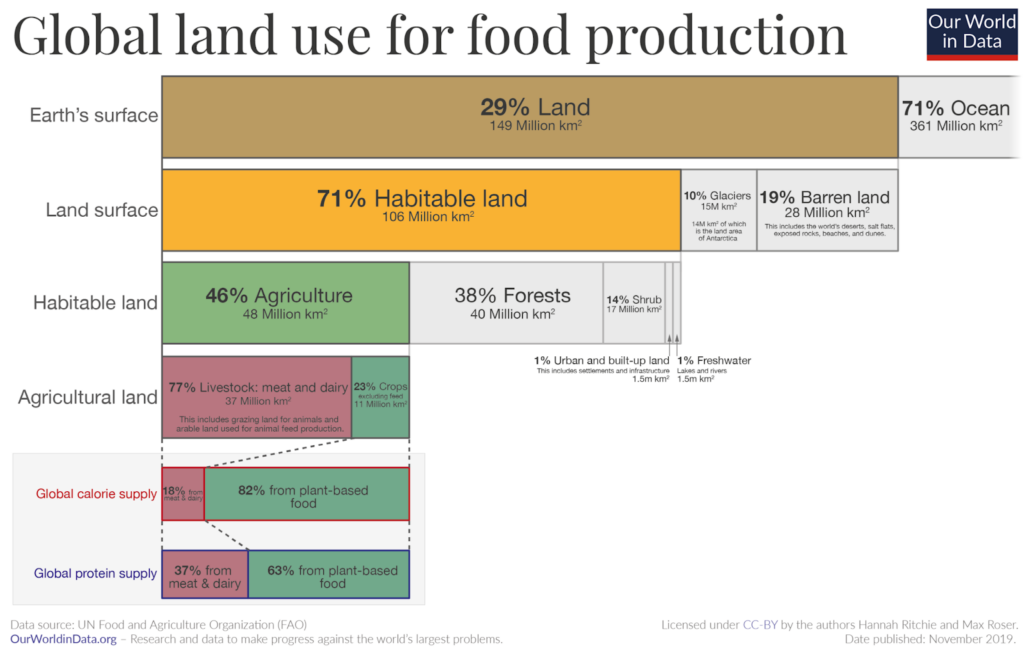
Growing oranges has a lot of variables that contribute to their relative sustainability. Some of these variables include the amount of land they use, the way in which they grow, and the amount of time they take to grow. In this section, we will evaluate the relative sustainability of oranges’ land usage.
How ethical & sustainable are the land requirements for growing oranges?
- What is the land usage of oranges: Oranges yield about 40–50 tons per hectare. This is a very high land usage compared to other fruits. For example, watermelons only yield around 2–3 tons per hectare. Therefore, oranges have a fairly sustainable use of land.
- Where and how are oranges grown: Oranges are grown on trees in orchards. Citrus trees have been found to have excellent carbon-sequestering properties. Carbon sequestration is the process of capturing carbon from the atmosphere and storing it in the ground. Therefore, oranges can lower their carbon footprint by simply using their own root systems.
- Are oranges grown in monocultures or polycultures: Oranges are typically grown in monocultures, which contribute to biodiversity loss and ecological breakdown. Monoculture farming is incredibly unsustainable, often leading to a process called ‘desertification’, wherein land is completely depleted of nutrients due to overfarming, effectively becoming a desert. So, even though in-season oranges are imported at smaller distances and grown outside, they still use unsustainable growing practices.
- How does the growing of oranges affect soil fertility and erosion: Citrus farms have contributed a lot to soil erosion over the years. Soil erosion can severely damage the lands that they are farmed on in a similar way to monocultures. This aspect of orange farming is thus very unsustainable.
- How does the orange industry affect the loss of habitable land: Brazil’s rainforests have been particularly damaged by the orange trade. Fruit farming and other agriculture cause severe deforestation within the rainforest, which is inhabited by people and animals alike. Many indigenous Amazon groups have even filed lawsuits against the government for agriculture-related destruction of their land.
- How does the orange industry affect wildlife and biodiversity: Orange farms contribute significantly to deforestation in the Amazon. This leads to habitat loss for many species that call the rainforest their home. Habitat loss is the leading cause of endangered species and so many kinds of Amazon wildlife have become threatened, such as jaguars, giant otters, and spider monkeys.
In short, oranges’ use of Amazon rainforest land means they contribute majorly to habitat loss and land destruction. Despite their ability to sequester carbon, they are still a fairly unsustainable fruit.
How Ethical & Sustainable Is the Water Footprint of Oranges
Oranges have a moderately sustainable water footprint of about 60 inches of water per year. They require a medium amount of additional irrigation, yet have a high amount of water needed to clear their pesticide residues.
Water usage is one of the most important factors in a fruit’s sustainability. Practices like irrigation use significant resources and can cause pollution, and as such, factors like the amount of water used, where it is sourced, as well as the way they affect the water sources around them, are all important. Here, we will look at these different angles of oranges’ water footprint.
How ethical & sustainable is the water footprint of growing oranges?
- What is the overall water usage of oranges: One orange tree consumes an average of 75 gallons of water per day or around 60 inches of water per year. This usage is somewhat high for fruits, but is actually 20% less than other major citrus fruits, like grapefruits and oranges.
- What is the green water footprint of oranges: The green water footprint is the amount of water from precipitation stored in the soil and used by plants for growth. Most oranges grow in Florida, where it rains around 54 inches per year. Thus, Florida oranges don’t require high amounts of irrigation. However, oranges that come from California, which only gets around 22 inches of rain per year, will need significant amounts of irrigation. Therefore, oranges’ green water footprint will depend on where they are grown.
- What is the blue water footprint of oranges: The blue water footprint is the amount of water sourced from surface (such as rivers or lakes) or groundwater resources. In Florida, at least, there is enough rainfall to cover oranges’ water needs. However, those water requirements are not evenly distributed throughout the year. During summer, oranges’ water requirements are much higher, needing around 135 gallons per day. This means that extra irrigation needed during the summer drives up oranges’ overall blue water footprint.
- What is the gray water footprint of oranges: The gray water footprint is the amount of freshwater required to clean up water pollution to meet certain quality standards. Essentially, it’s the amount of water needed to make polluted water clean enough to be safe and healthy for humans and the environment. Oranges have some of the highest pesticide and fungicide rates among fruits. These chemicals can be very bad for groundwater, and oranges have a significant gray water footprint.
- How does the orange industry affect freshwater and ocean pollution: Pesticides and fertilizers used in the orange production process greatly affect groundwater. If this pollution is not cleaned up, it can get into freshwater sources and affect aquatic life. Oranges also use plastic in their packaging, which has been proven to have devastating effects on ocean life.
In short, oranges have moderate irrigation requirements, depending on where they are grown, as well as high pesticide use, which makes them fairly unsustainable from a water perspective.
How Ethical & Sustainable Is the Agrochemical Usage for Oranges
Oranges’ agrochemical usage is very unsustainable. They require a lot of pesticides and fertilizers, which are unsustainable pollutants, especially in groundwater and for wildlife.
Pesticides and fertilizers are agrochemicals that are very unsustainable and damaging to ecosystems. This is because they require resources to create and can easily run off into groundwater and soil systems. Here, we will look at how sustainable oranges’ pesticide and fertilizer rates really are.
How ethical & sustainable is the agrochemical usage of growing oranges?
- What is the pesticide usage of oranges: Oranges have a high pesticide usage. Pesticides not only have adverse effects on groundwater, but they can also impact wildlife, insect populations, and soil microbes. Pesticides are also considered to be unsustainable, and so they hinder oranges’ sustainability considerably.
- What is the fertilizer usage of oranges: Oranges are typically fertilized with nitrogen, phosphorus, potassium, magnesium, and lime. Nitrogen, in particular, can cause a lot of damaging chemical runoffs and other environmental consequences. Oranges’ use of nitrogen fertilizer is very unsustainable.
- Are there any known issues connected to the agrichemical usage for oranges: There are certain fungicides that are used on oranges that are known to have hormone-disrupting qualities. They are also known carcinogens which can be very harmful to humans and animals alike.
In short, the pesticides and fertilizers used by oranges are very unsustainable, especially through their effect on groundwater, which is then harmful to wildlife and soil.
How Ethical & Sustainable Is the Carbon Footprint of Oranges
Oranges have a moderately sustainable carbon footprint of around 0.3kg (0.66 lbs) CO2e per pound. In particular, the usage of pesticides, mechanical harvesting processes, and low composting rates significantly contribute to the carbon footprint of oranges.
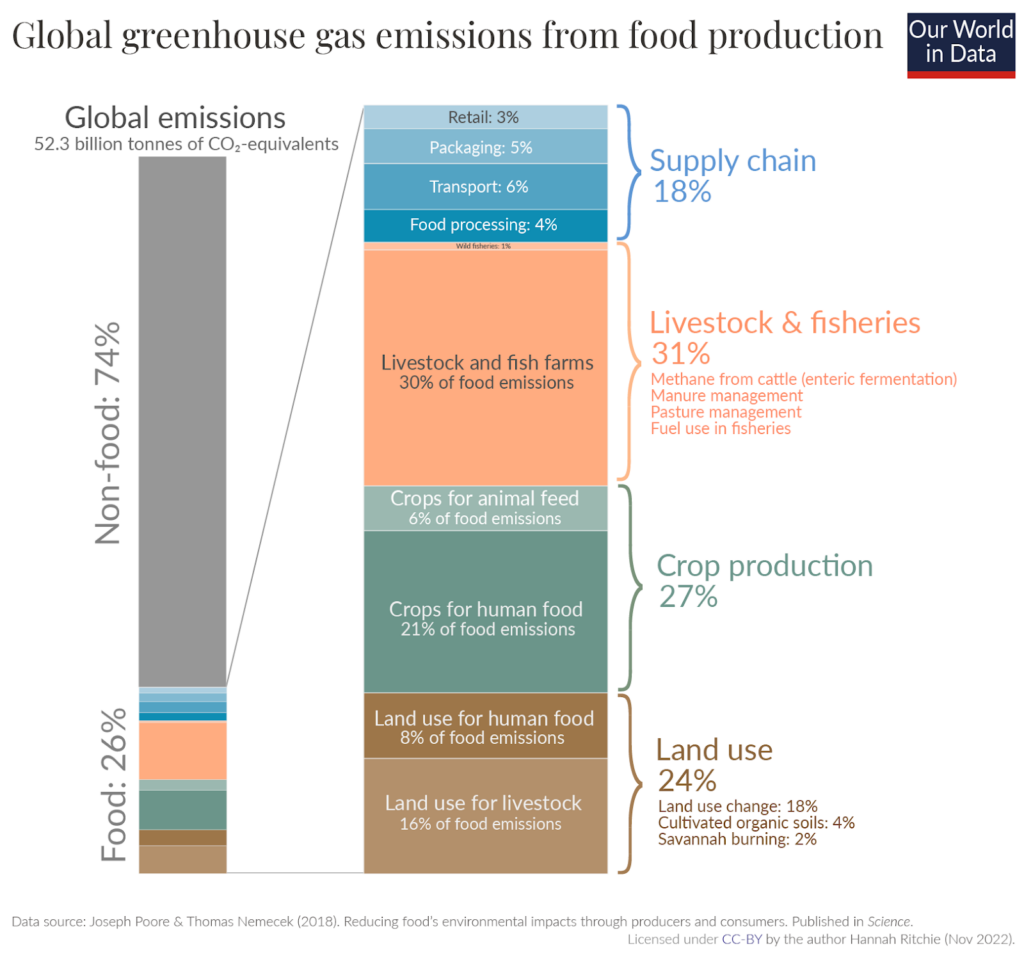
Carbon footprint is one aspect of the overall sustainability of a fruit. It essentially measures how much carbon or other greenhouse gasses the production of fruits emits into the atmosphere. Emissions from product manufacturing, irrigation, transportation fuel, and landfills all add up to create the overall carbon footprint of a fruit. Let’s see how the carbon footprint of oranges contributes to their overall sustainability.
How ethical & sustainable is the carbon footprint of oranges?
- What is the overall carbon footprint of oranges: The overall carbon footprint of oranges is around 0.3kg (0.66 lbs) CO2e per pound of oranges. This means that every pound of oranges emits 0.3kg of carbon or other greenhouse gasses into the atmosphere. This is a fairly average carbon footprint among fruits.
- What are the main contributors to the carbon footprint of oranges: The main contributors to the carbon footprint of oranges are irrigation requirements, pesticide use, energy from mechanized harvesting, and low composting rates (the latter leading to methane-emitting food waste in landfills).
- Which life-cycle stage of oranges has the highest carbon footprint: The harvesting, processing, and packaging of oranges contribute the most to their carbon footprint. This is because oranges are mechanically harvested and use significant cardboard packaging.
In short, oranges have a fairly average carbon footprint. Mechanization and pesticides, especially, emit significant amounts of carbon during the orange production process.
How Ethical & Sustainable Is the Waste Generation of Oranges
Oranges’ waste generation is very unsustainable. This is because they use plastic packaging and have low composting rates for their organic waste, which contribute to unsustainable landfills.
When fruit waste, either in the form of packaging or organic materials, is disposed of, it can cause a lot of problems. Whether it’s damaging wildlife, getting into oceans, emitting methane, or dissolving into microplastics that contaminate groundwater, all these materials have their part to play. The sheer amount of waste we produce is reaching a crisis point and won’t be able to continue much longer. In this section, we will look at how sustainable oranges’ waste generation is.
How ethical & sustainable is the waste generation of oranges?
- What is the packaging of oranges: Orange packaging mainly consists of cardboard and plastic netted bags. Plastic has devastating consequences on the environment, such as affecting ocean life, emitting greenhouse gasses in its creation, and creating toxic microplastics that get into groundwater and food. Cardboard, though better than plastic, still contributes to deforestation which is incredibly unsustainable from a manufacturing and environmental perspective. Because of the damages caused by their production, orange packaging is very unsustainable.
- How is the packaging of oranges disposed of: Both cardboard and plastic can be recycled, but their recycling rates tell a different story. On one hand, you have cardboard, which has a very high recycling rate of 89%. Whereas, on the other hand, you have plastic, which has a recycling rate of around 9%. This means that the majority of plastic orange packaging is ending up in landfills. Landfills have been described as “the antithesis of sustainability” because they use increasing land on this finite Earth. Therefore, oranges’ use of plastic packaging is one of the least sustainable aspects of their production.
- How are oranges disposed of: Orange peels are completely biodegradable. However, many end up in landfills, which take up valuable space and release methane, a greenhouse gas. And as only around 4% of food is composted, most oranges end up in landfills. Pair that with the almost 4 million tons of citrus peels that are wasted every year, and they are clearly a very unsustainable fruit.
In short, oranges have low recycling rates among plastic and low composting rates among food waste. Both oranges and their packaging generally end up in incredibly unsustainable landfills.
What Have Been Historical Ethics & Sustainability Issues Connected to the Orange Industry
Oranges have partaken in some very unsustainable farming practices over the years. These include the destruction of the Amazon, damage to aquatic life from pesticides, and wildlife habitat loss.
All fruits have had a complex road toward global distribution. They originate in one part of the world and often travel far to end up in your local supermarket. From farm to table, some of our favorite fruits have used unsustainable practices. Whether it’s exploiting labor, deforestation to meet demand, water pollution, or disruption of wildlife, most fruits have left a path of destruction. Many of these effects are still felt today or have even increased. Let’s see how oranges have fared throughout history.
What have been the key ethical & sustainable issues of the orange industry?
- Has labor been exploited because of orange production: There have been countless instances of labor violations by the orange industry, many we will never know about. However, one prominent case from 2021 saw workers at a California citrus farm file a class-action lawsuit over wage theft. Child labor has also been discovered in the orange industry, exploiting children as young as five years old. Cases like these demonstrate how prominent this kind of financial abuse really is in the citrus industry.
- How much land has been lost because of orange production: Brazil is one of the world’s leading orange producers. When the orange industry turned toward Brazil in the 1970s, many of the fields were former coffee farms, rather than rainforest. However, because of demand, orange farms have still destroyed significant amounts of the Amazon rainforest. Amazon deforestation is still rampant, with an area the size of Qatar being destroyed in 2021 alone. This process is so unsustainable that the rainforest will be completely gone by 2100 at current rates.
- Which wildlife species have been negatively impacted or displaced because of orange production: Wildlife is affected by several byproducts of the orange industry. Over the years, many native rainforest species have experienced habitat loss due to orange farming deforestation. Wildlife has also been affected by oranges’ extreme pesticide use, which can be poisonous to many species, starting with insects and worms and making its way up the food chain to birds and larger animals. Species decline contributes to a process called ecological breakdown, wherein species are lost at such a rate that it breaks links in the ecosystem and causes a mass extinction event.
- Have water sources and soil been contaminated because of orange production: Because oranges historically have very high pesticide rates, they have contaminated a lot of groundwater. Aquatic life, including fish, other sea creatures, and aquatic plants, have all suffered because of orange pesticide use. The ocean is a huge aspect of the Earth’s biodiversity and is dealing with its own version of ecological breakdown triggered by acidification and plastic pollution.
In short, the unsustainable practices used by orange farming have caused some serious damage to the rainforest, as well as participated in extreme exploitation, such as child labor.
How Can You Reduce Your Environmental Impact and Offset Your Personal Carbon Footprint
There are a few things you can do to make your orange consumption more sustainable, while still enjoying them. You can also consider offsetting your personal and orange-related carbon emissions, which work to remove carbon emissions elsewhere that are then attributed to you. Here, we will walk you through how to accomplish both of these things.
How Can You Shop for Oranges More Ethically & Sustainably
In this section, we give you a short list of ways you can consume oranges in a more sustainable way. This list is designed to target the most unsustainable parts of oranges’ life-cycle:
- Buy oranges in season: Oranges that are grown in their proper season are more likely to be domestically produced, which is good for several reasons. Mostly, it reduces travel times, which cuts down on carbon footprint and other resources. Abstaining from oranges between June and November, and especially between July and September, can help you to make sure they are coming from more local sources.
- Buy from larger farms: This may sound counterintuitive, but larger orange farms actually might be more ethical. Smaller farms may seem idyllic, but they are audited less often than larger farms, meaning that there is more room for misconduct. Some have found that smaller farms are more likely to engage in wage theft, unsafe conditions, and even abuse. So, while supporting corporations might not seem like the right thing to do, it might actually result in the most harm-reduction.
- Buy organic oranges: Pesticides are a major driver of oranges’ unsustainability, causing a significant amount of environmental damage. Organic farms generally avoid high amounts of chemical pesticides and nitrogen fertilizers, and so they are good to support if you want to reduce your pesticide and fertilizer footprint. Pesticide poisoning is also a major safety hazard for agricultural workers, so supporting organic farms means that one big safety risk is being reduced.
Following some of these methods can really help you to make your orange-eating more sustainable. None of these will completely eradicate the negative impacts, since there are always effects that may be outside of your control. But some reduction is always better than nothing!
Which Organizations Can You Support to Help Promote Ethics & Sustainability
While orange production engages in some very unsustainable practices, there are also some organizations that help you change the parts of these processes that would otherwise be outside of your control. These organizations are working hard to prevent and reverse damage to the environment caused by industries like oranges agriculture, towards a more sustainable future.
In the table below are some of the best charities that work in the areas where orange production are very unsustainable—and beyond:
Though it is helpful to increase the sustainability of your personal oranges consumption, supporting these organizations takes your positive impact a step further. You will be reaching far beyond your own consumption impacts and helping to build a better world for everyone!
How Can You Offset Your Personal Carbon Footprint
The carbon footprint is a key part of how sustainable we live. And it is one of the ways we measure the effects of our human-induced global climate change. Yes, even from eating oranges!
“Carbon footprint: the amount of greenhouse gasses and specifically carbon dioxide emitted by something (such as a person’s activities or a product’s manufacture and transport) during a given period”
Merriam Webster
Basically, it is the amount of carbon emitted by you as an individual or an organization providing you with goods and services—including oranges:
- This includes GHG emissions from producing the products that we use and foods that we eat (e.g., power plants, factories or farms, and landfills)
- GHG emissions from fuel that we burn directly or indirectly (e.g., logistics and transportation, cooling or heating facilities),
- as well as the GHG emissions attributed to how we consume these products and foods.
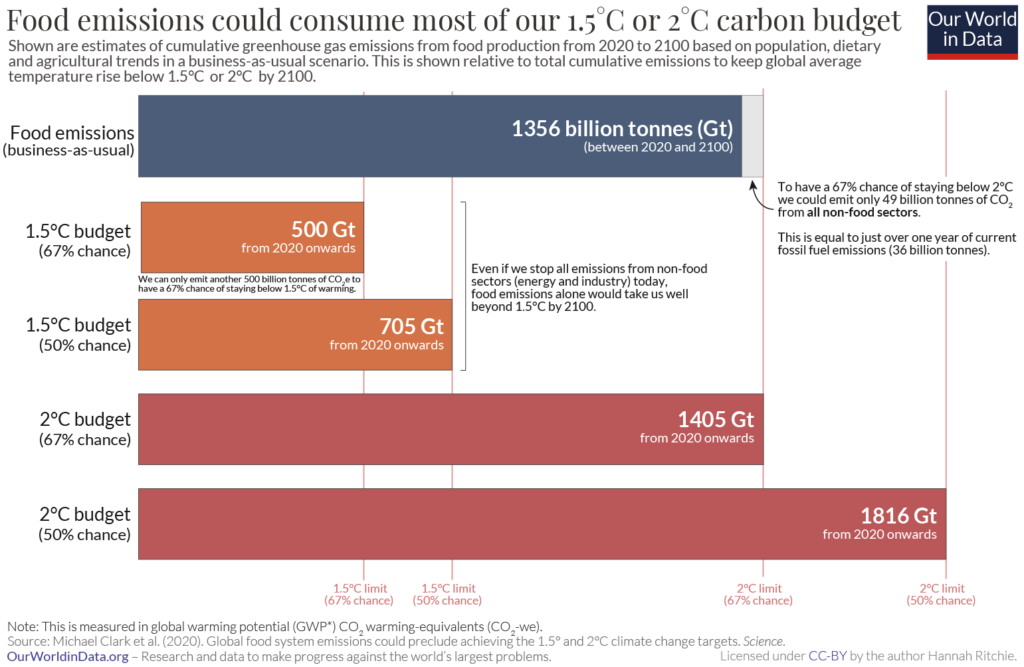
Carbon offsets are reductions in carbon emissions that are used to compensate for carbon emissions occurring elsewhere—for example for the carbon emissions that are associated with oranges. They are measured in tons of CO2 equivalents and are bought and sold through international brokers, online retailers, and trading platforms on what is known as the global carbon offset market.
“Carbon Offset: a way for a company or person to reduce the level of carbon dioxide for which they are responsible by paying money to a company that works to reduce the total amount produced in the world, for example by planting trees”
Oxford Dictionary
In terms of oranges—and indeed all food types—there will always be a carbon footprint, because of the resources it takes to get your food from farms to the place where you’ll eventually eat them. And while there are ways to reduce your carbon footprint when shopping for oranges, carbon offsets would be a way to reduce your CO2e emissions all the way down to net zero (or even to become climate positive).
However, when you purchase carbon offsets, it’s important that they actually make a difference in offsetting (aka reducing) total carbon emissions. To achieve that, the following are key criteria:
- Carbon offset projects have to be effective (different projects have different effectiveness rates)
- Carbon offset projects have to be additional
- Carbon offset projects have to be permanent
- The claims from carbon offset projects have to be verifiable
To find the best carbon offsets for you personally, check out our full guide on the best carbon offsets for individuals, where you’ll also learn more about how these carbon offset projects work, what their respective offsetting costs are, and what your best way would be to offset your own carbon emissions.
Final Thoughts
Orange production is clearly heading toward a breaking point. Many of the practices that they are engaging with are not able to continue, either because resources will run out, the ecological breakdown, or the human cost. Fortunately, there are lots of people out there working to promote ethics and sustainability in the orange industry. You, too, can follow steps, such as supporting organic orange farms, to try and make your personal orange consumption more sustainable. Hopefully, thanks to these efforts, oranges will be headed toward a more sustainable future!
Stay impactful,

Sources
- World Atlas: Top Orange Producing Countries
- Alpha Foodie: How to Make Orange Juice
- Christina’s Cucina: Sicilian Orange Cake
- USDA: Orange Nutritional Facts
- Food and Agriculture Organization of the United Nations: SAFA (Sustainability Assessment of Food and Agriculture systems) Guidelines
- Food Ethics Council: What is food ethics?
- The Fair Labor Association: Agriculture Standards
- MDPI Sustainability: Eating in Season—A Lever of Sustainability? An Interview Study on the Social Perception of Seasonal Consumption
- MDPI Foods: The Role of Local Seasonal Foods in Enhancing Sustainable Food Consumption: A Systematic Literature Review
- UN Environment Programme: Environmental Impact Assessment and Strategic Environmental Assessment: Towards an Integrated Approach
- Our World in Data: The environmental impacts of food and agriculture
- Our World in Data: Global land use for food production
- World Health Organization: Preventing disease through healthy environments: a global assessment of the burden of disease from environmental risks
- ScienceDirect (Biological Conservation): Worldwide decline of the entomofauna: A review of its drivers
- EPA: The Sources and Solutions: Agriculture
- EPA: Reducing Food Waste and Packaging
- FoodPrint: The Environmental Impact of Food Packaging
- Visit Florida: Everything You Need to Know About Florida Citrus
- Arizona: Irrigating Citrus Trees
- Impactful Ninja: What is the Carbon Footprint of Oranges
- Produce Blue Book: Oranges
- Merco Press: Brazil is the World’s Top Orange Juice Exporter
- Numbeo: Cost of Living Brazil
- NPR: Guest Workers, Legal Yet Not Quite Free
- NCBI: Preventing Eye Injuries Among Citrus Harvesters
- Safe at Work: Citrus Harvest
- Independent: Children as Young as Five Suffer in Picking Fruit for Our Orange Juice
- ILO: Child Labour in Agriculture
- Newsroom: Child Labor Protections are Lacking in Many Countries
- Direitonet: Constitution of Brazil
- Public Eye: Bitter Oranges
- Independent: Orange Pickers
- All Recipes: How to Store Oranges
- Frutas: Hortalizas: Oranges
- Footprint Network: Climate Change
- ARAD Branding: Purchase and Day Price of Orange Fruits
- Impactful Ninja: What is the Carbon Footprint of Watermelons
- Britannica: Orange
- Frontiersin: Appraisal of Carbon Capture
- National Grid: What is Carbon Sequestration
- Survival Gardener: The Problem With Monoculture Farming
- EOS: Monoculture Farming
- Iberdrola: Desertification
- Science Direct: A Systematic Review of Soil Erosion
- WWF: Soil Erosion and Degradation
- Rainforest Alliance: Rainforest Alliance Certified Orange Juice
- Rainforest Concern: Why Are Rainforests Being Destroyed
- Al Jazeera: Brazil Indigenous Group Sues Bolsonaro
- Mongabay: The Impacts of Agriculture in the Rainforest
- Ecologi: How Does Deforestation Impact Wildlife and Biodiversity
- National Geographic: Endangered Species
- Palota Amazon Travel: 10 Endangered Species of Amazon Rainforest Wildlife
- Water Footprint: What is a Water Footprint?
- Visit Florida: Florida Citrus
- Weather Stem: Florida
- Best Places: California
- The Guardian: Cocktail of Pesticides on Almost All Oranges
- USGS: Pesticides in Groundwater
- Science Direct: Towards Understanding the Impact of Pesticides on Groundwater
- IUCN: Marine Plastic Pollution
- GOV.BC: Environmental Protection and Pesticides
- Nature: Pesticide Constrains Sustainability Goals
- PUBS: Pesticides and Nitrate in Groundwater
- Mitsui: Reducing the Environmental Impact of Chemical Fertilizers
- EWG: Hormone-Disrupting Fungicides Found on Most Citrus Fruits
- Biological Diversity: The Plastic Production Problem
- Teorra: What is the Carbon Footprint of Packaging?
- UNEP: How Tiny Plastic Particles are Polluting Our Soil
- TRVST: Environmental Impact of Cardboard
- WWF: Effects of Deforestation
- Also Known As: 12 Interesting Facts About Packaging Waste and Disposal
- Active Sustainability: Landfills: A Serious Problem for the Environment
- GOV.BC: Waste Management
- EPA: Reducing the Impact of Wasted Food
- Modern Farmer: Food Waste, No More
- Law Street Media: Citrus Farm Workers Claim They Were Not Paid Fair Wages
- USA ID Gems: Oranges
- Food Revolution: Are Oranges Good For You
- Mongabay: Despite Drop in 2022, Amazon Deforestation Rate Has Soared Under Bolsonaro
- The World Counts: When Will the Rainforests Be Gone
- The Survival Gardener
- Friends of the Earth: Effects of Pesticides on Our Wildlife
- Teaching Times: Climate Emergency and Ecological Breakdown
- Annual Reviews: Ocean Acidification and Coral Reefs
- Al Jazeera: Small Farms, Big Problems
- UVM: Sources of Nitrogen for Organic Farmers
- EPA: Agricultural Worker Protections
- Our World in Data: Greenhouse Gas Emissions per 1,000 kilocalories
- United States Environmental Protection Agency (EPA): Climate Change Terms
- Impactful Ninja: Best Charities That Advance Ethics Worldwide
- Impactful Ninja: Best Charities That Promote Sustainability
- Impactful Ninja: Best Charities That Help Farmers
- Impactful Ninja: Best Charities That Fight to Protect our Environment
- Impactful Ninja: Best Charities for Reforestation
- Impactful Ninja: Best Wildlife Conservation Charities
- Impactful Ninja: Best Charities for Protecting the Amazon Rainforest
- Impactful Ninja: Best Charities That Fight for Clean Water
- Impactful Ninja: Best Charities That Help Conserve Our Rivers
- Impactful Ninja: Best Charities to Save Our Oceans
- Impactful Ninja: Best Charities for Helping Farm Animals
- Impactful Ninja: Best Charities for Climate Change
- Impactful Ninja: Best Carbon Offsets for Individuals
- Impactful Ninja: Best Charities That Fight to Reduce Food Waste
- Impactful Ninja: Best Charities That Fight to End Plastic Pollution
- Impactful Ninja: Best Charities That Promote Recycling
- Impactful Ninja: Why Is a Carbon Footprint Bad for the Environment?
- Impactful Ninja: Best Carbon Offsets for Individuals

